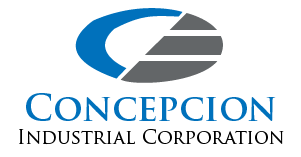SAP HANA Case Study – The Turning Point for Kellogg’s, Shire & Concepcion
FREE Online Courses: Click for Success, Learn for Free - Start Now!
In this SAP HANA case study article, we are going to throw some light on the usefulness of SAP HANA in different sectors and domains of the industry. We will discuss case studies of three companies namely, Shire, Kellogg’s and Concepcion.
It will help you to understand the challenge that the companies were facing and how SAP HANA benefitted them in overcoming that challenge.
Let’s start!
SAP HANA Case Studies
We will start by discussing the case study of Kellogg’s.
SAP HANA Case Study 1: Kellogg’s
Kellogg’s is a leading food manufacturer and a multi-national company based in Michigan, USA. It produces a wide range of convenience foods and cereals.
Their business extends to 180 countries where their products are manufactured and marketed. The popular corn flakes company was found in 1898 by Kellogg brothers.
The market of ready-to-eat foods like Kellogg’s cereals is a very competitive one with tight margins. Being fully aware of the edge to edge competition in the market, Kellogg’s primary focus has been on its trade spend.
Trade spend is the money spent by the manufacturer to promote their product at the retailer’s front. Nearly one-third of Kellogg’s annual revenue is spent on promotions as trade spend.
The promotional activities involve discount coupons, special offers, sale promotions, ad campaigns and buying a preferred slot at the grocery store shelf.
If the trade spend of Kellogg’s improves by 1% that amounts to a whopping $50 million dollars. This goes to show how important is it for the company to improve their trade spend and make it a profitable investment.
The challenge
To keep a close eye on the company’s trade spend, they created several complex data simulations for data analysis and modeling to be run on traditional relational database systems deployed on-premise. But by 2013, the traditional database system became inefficient for the company’s requirements.
In requirements, the company needed a bunch of simulations such as TV Ad promotions, coupons campaigns, store displays, sales, digital marketing, shelving costs to run on an analysis system.
The traditional systems could only run one simulation at a time creating a major lag and inefficiency in terms of timely predictions. The predictions were to find out which promotional activity is the most profitable for the company.
Thus, the company needed an efficient and fast solution in the form of a cloud that store terabytes of data and have analytical capabilities as well. Because real-time feedback on the trade spend of even the slightest change in the market can save or earn the company a lot of revenue.
Also, with the help of right interpretations and predictions of trade spend data, the company could avoid trivial and waste investments and focus on only the lucrative ones.
The change
Kellogg’s decided to go with SAP’s solution called Accelerated Trade Promotion Management/Planning (TPM) that is powered by SAP HANA and deployed on a public cloud platform Amazon Web Services (AWS).
The AWS provides a fully SAP-certified HANA environment to the solution. This SAP solution was immediately rolled out for test and development environments in the US.
Due to the cloud-based AWS platform and the in-memory database technology of SAP HANA, the solution achieved speed, agility and optimal performance as per the company’s requirements. It was fulfilled without making heavy investment in physical hardware and environment set-up.
The SAP Accelerated Trade Promotion Management (TPM) solution (powered by SAP HANA) can accommodate several terabytes of data. And, the data can be scaled as per the company’s infrastructure needs and stays affordable.
The solution breaks down usage and cost to a minute granular level which makes it easy for the users to segregate information and analyze sales operations in each department.
Moving their setup from premise to cloud has benefited Kellogg’s in many ways. They have saved more than $900,000 on hardware, software, and maintenance. They are likely to save nearly a million dollars in the next five years’ time.
The company is also able to save by reducing their trade spend as they can run multiple data simulations (calculations) simultaneously.
Using AWS on cloud and SAP HANA in-memory database technology, the company could function faster than ever in terms of running data simulations (calculations), analyzing market scenarios and decision-making.
Role of SAP HANA
The SAP TPM solution powered by SAP HANA uses the in-memory database and computing capabilities. Along with SAP HANA, it utilizes multiple AWS instances for SAP applications and HANA database layers.
The AWS instances are called Amazon Elastic Compute Cloud (Amazon EC2) which can process up to 16TB of trade spend and sales data of the promotional operations in the US weekly. They are also used in modeling, about a dozen complex data simulations in a day.
Several different Amazon services are used in association with SAP HANA for data backups, direct data access, storage, maintaining logs, monitoring, etc.
SAP HANA Case Study 2: Shire Pharmaceutical Group
Shire is leading life science and biotech company focused on rare diseases and specialized conditions. It is based in Dublin, Ireland having around 24,000 employees. The company’s revenue is $15.2 billion US dollar (approx) as of the year 2017.
The challenge
Shire is one of the leading biotech companies in the world focused on treating rare diseases and highly specialized conditions. It involves seven therapeutic areas ranging from oncology to neuroscience. Shire’s products are sold in more than 100 countries.
The company wanted to integrate its IT systems. They felt the need to bring together their disparate IT systems especially after a phase of rapid expansion. Also, they wanted to migrate from Oracle to SAP HANA database.
They wanted to make these changes in order to make their IT systems more organized and centered. This would help the company to operate efficiently and focus entirely on rare disease management.
The diverse IT systems were initially deployed on both SAP and non-SAP systems. The company required integrating all these systems into a single strong and solid IT system and migrating multiple databases into the SAP HANA database.
The change
After Shire integrated its IT systems using SAP Enterprise Support and migrating from Oracle to SAP HANA, the company has seen a performance improvement by 10%-15%.
Created a solid IT foundation and helped people suffering from rare diseases.
Shire has a unified IT system and SAP HANA’s in-memory database which enables them to access and analyze huge amounts of data to make innovations and discoveries in the field of rare disease management and curing.
The SAP HANA solution enhanced the company’s performance, provided support of system health checks, ensured minimal risk and downtime.
Role of SAP HANA
The company got full support from SAP Enterprise Support advisory team during the time of integration. The team extended their support even after integration was successfully done for issue resolution.
The company admired SAP HANA for its advanced analytics capabilities, high-speed transactions, accuracy, and up-to-date responses and guided analytics and support.
The Shire also experienced an increase in their efficiency by the virtue of a unified IT system and robust in-memory database environment of SAP HANA.
SAP HANA Case Study 3: Concepcion Industrial Corporation
In this case study, we will see how SAP HANA proved to be beneficial for Concepcion Industrial Corporation (CIC) in terms of business growth and cost-effectiveness.
The challenge
Due to the on-premise deployment of the company’s data centers, the company was facing a problem of uncontrollable increase in IT expenditure. At some instances, the IT expenditure increase surpassed the company’s revenue growth.
The main money suckers were data servers, data storage, networking apparatus, etc on the on-premise data center setup. In addition to this, IT administration expenditures were also shooting up. The on-premise system would also not support IoT solutions and would be awfully costly setup.
The company needed a cloud-based IT system. The transition from an on-premise IT system to a cloud-based one was a costly process. But it would bring innovation to the company’s ways of working and open new opportunities.
The change
The company decided to move its data center setup to a public cloud. By doing so, they could cut down on a lot of IT expenditures made on on-premise deployment. CIC started looking for potential cloud-service providers like Google, IBM, Microsoft Azure, and Amazon Web Services (AWS).
After trying out the services of these providers in a test environment, they finalized Amazon Web Services (AWS) as their cloud-services provider.
The company finally had a cloud-based IT system as they completed migrating its IT systems to AWS Cloud in 2016. They could test a project easily and deploy it within weeks using the cloud0-based infrastructure.
The cloud-based IT system could also support a large-scale computing environment for products using IoT solutions.
Role of SAP HANA
After a successful migration from an on-premise IT setup to a cloud-based IT system in 2016, the company felt the need for a robust database management and analysis platform. They needed it to take care of their business operations.
In early 2018, CIC deployed SAP HANA on their cloud-based infrastructure (AWS Cloud). The on-cloud implementation process lasted for about six-eight months until SAP HANA was completely ready for use.
SAP HANA deployment process was easy, and the company only needed SAP’s support for some extract, transform and load operations.
SAP HANA plays a very crucial role in managing and assessing CIC’s financial, supply chain, production operations in both consumer and commercial businesses. With the help of SAP HANA and AWS cloud-services, CIC was able to reduce their IT costs by 30-50%.
The company is experiencing continuous revenue and business growth without any IT expenditure increase. Also, IT availability increased by 99.99 %. Now the IT department can focus on more important issues and services.
Summary
These were the SAP HANA case studies of three companies; Kellogg’s, Shire and Concepcion. In all of the case studies, we saw how SAP HANA has helped these companies grow in terms of business and profits.
In short, the business intelligence capabilities, advanced analytics, and HANA’ in-memory database engine helped companies leverage on the heaps of informative data available and manage their resources well.
Any other SAP HANA case study that you want to explore? Drop in the comment section.
Did you know we work 24x7 to provide you best tutorials
Please encourage us - write a review on Google




